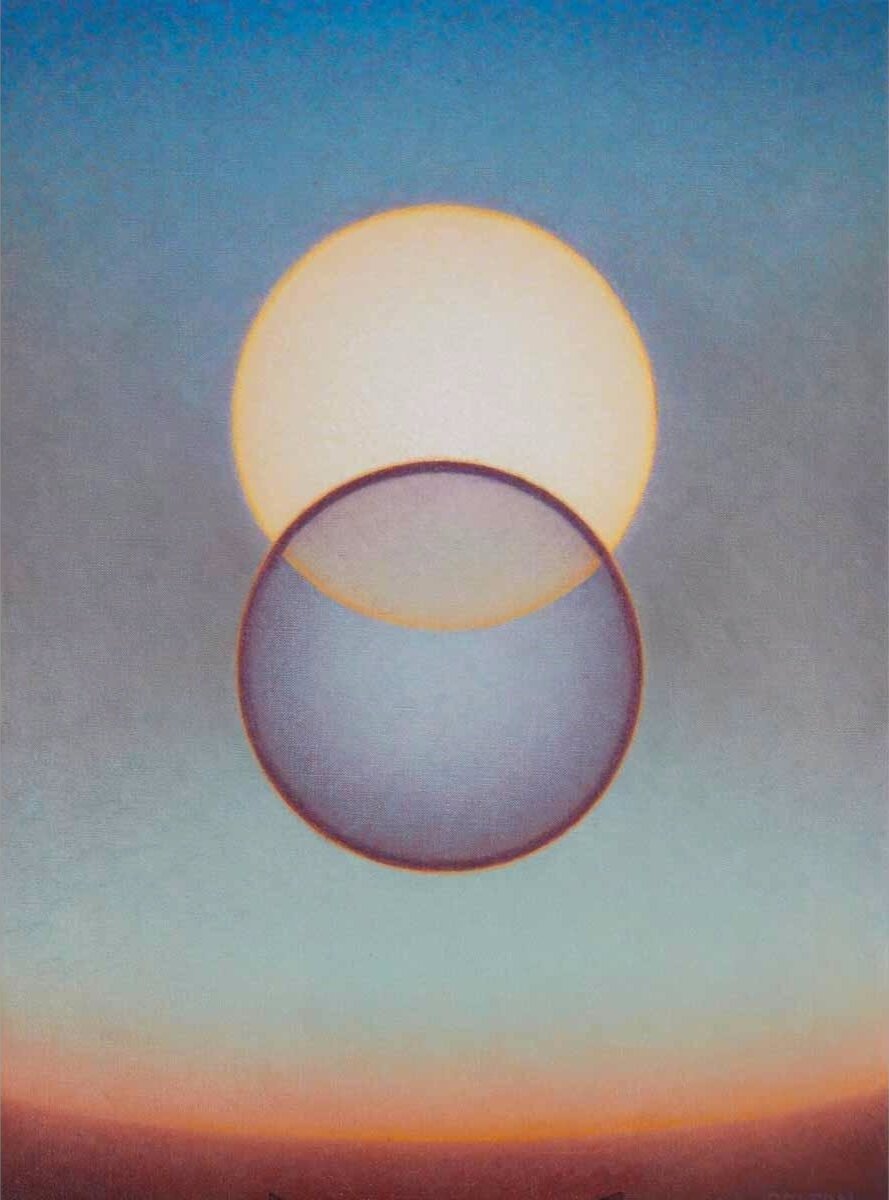The Painting Report: Agnes Pelton
Agnes Pelton, Light Center (1947–48). Photo by Paul Salveson, courtesy of the collection of Mike Stoller and Corky Hale Stoller.
On my calendar this spring is the Agnes Pelton: Desert Transcendentalist exhibition that was scheduled to open at the Whitney Museum of American Art on March 13th in NYC. Of course the show is now suspended as a result of COVID-19. The Whitney’s website now has the caption “Dates To Be Announced” under the exhibition heading. I’m skeptical, that when the Whitney does reopen, travel to NYC will be practical, but fingers crossed. I certainly would love the chance to her paintings in person. After New York, the exhibition travels to its final stop at the Palm Springs Art Museum in California. Again dates are TBD.
I only recently learned of Pelton’s work. She is another case of “how did I not know about this fantastic painter.” This time maybe I shouldn’t feel so bad. The show’s curator Gilbert Vicario from the Phoenix Art Museum only learned about her in 2015. It is heartening to know that many younger curators are examining marginalized artist. One can only hope that this new attitude continues to spills over into the examination of contemporary artists. That said, Pelton did appeared in several important exhibitions. In 1986 the Los Angeles County Museum of Art included her in The Spiritual in Art: Abstract Painting 1890-1985, and she was the subject of a traveling solo show, Agnes Pelton: Poet of Nature, assembled by the Palm Springs Museum of Art in 1995, which was the last major solo show.
Pelton was born in Stuttgart, Germany in 1881. She attended the Pratt Institute in Brooklyn and shared the same landscape painting teacher as Georgia O’Keeffe, Arthur Wesley Dow. In 1931 she moved to Southern California where she lived in Cathedral City. Pelton was also the founding member of the Transcendental Painting Group in Taos New Mexico. She died in 1961.
There is a wonderfully delicate light that fills Pelton’s paintings. Her abstract works are translations of meditation experiences into the visual language of painting. Filled with symbolism these metaphysical landscapes depict stunningly sophisticated visuals. For me Pelton’s painting are about imagining ideal connections with the world around us. They are illuminated with color, shapes, symbols, and movement. Her paintings, such as The Blest and Messengers make connections between landscape and the heavens. They glow with light and marvelously imagined shapes and lines.
Agnes Pelton, Messengers (1932). Courtesy of the Phoenix Art Museum, gift of the Melody S. Robidoux Foundation.
Agnes Pelton, The Blest (1941). Photo by Martin Seck, courtesy of the collection of Georgia and Michael de Havenon.
You can read about Agnes Pelton in more detail using the links below. I’ve also included a link to Desert Transcendentalist exhibition book, I hope to pick one up this summer.
Articles:
Book:


